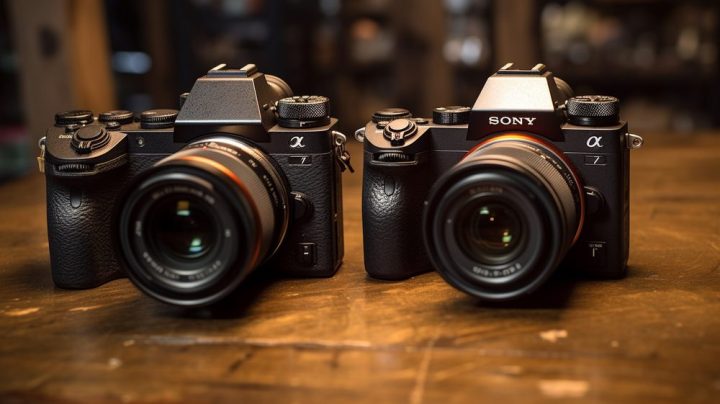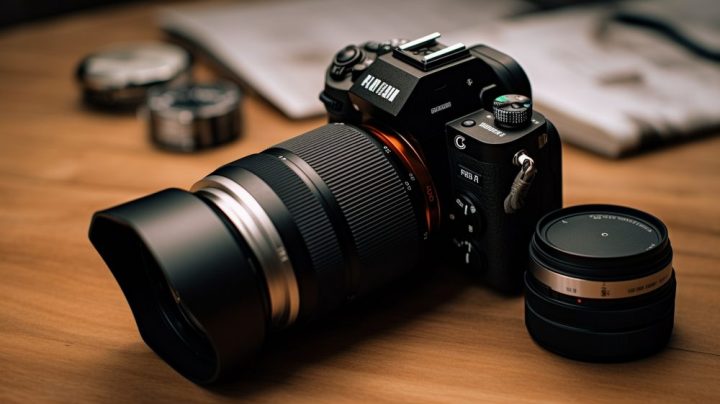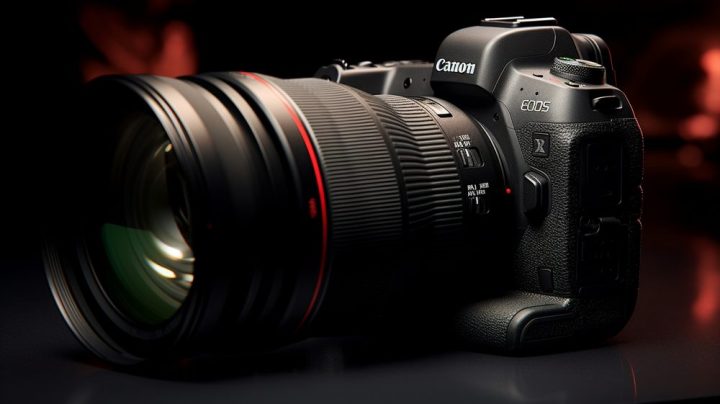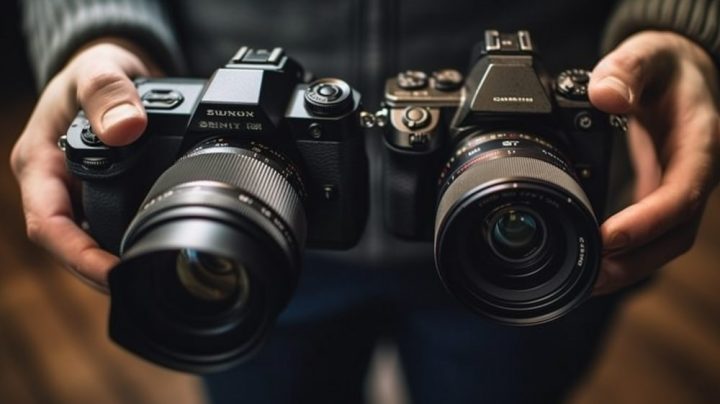Photography, while a rewarding hobby, can quickly become an expensive endeavor due to the cost of equipment. According to data from Statista, the global average price of digital cameras is projected to increase between 2023 and 2028. This continuous price growth is largely due to major camera manufacturers shifting their focus from low-end models, such as point-and-shoot cameras, to high-performance, feature-rich DSLR and mirrorless cameras.
In response to these rising costs, many people are turning to used cameras as a more affordable alternative. But cost isn’t the only factor driving this trend. Let’s delve into why buying a used mirrorless camera can be a smart choice.
Why Choose a Used Mirrorless Camera Over a New One?
Buying used camera can offer significant upfront savings, especially if you’re interested in more recent models. This is particularly true for those new to photography who are looking for an entry-level model. Cameras are among the most durable gadgets available, so buying second-hand doesn’t necessarily mean you’re compromising on quality or reliability.
While smartphones may become obsolete within a few years, a camera kit is built to last. This longevity is a significant advantage of investing in a second-hand camera. Furthermore, by participating in the circular economy of second-hand cameras, you’re helping to keep valuable equipment out of landfills and reduce energy costs and transport emissions associated with manufacturing. This makes you a more eco-friendly photographer.
However, it’s worth noting that buying used does come with potential risks. These can include hidden defects, lack of warranty, and the possibility of the camera being stolen property. It’s essential to mitigate these risks by buying from a reputable source, checking the camera thoroughly before purchase, and ensuring it’s not listed as stolen.

Tips for Buying a Used Mirrorless Camera
Now that we’ve explored the reasons for buying a second-hand mirrorless camera, let’s look at some tips to ensure your purchase goes smoothly.
1. Buy from a Reputable Source
To save costs without compromising on quality, it’s crucial to buy from a reputable source. Buying a used camera Online like, Online retailers Adorama offers a wide selection of second-hand mirrorless cameras at reasonable prices, with financing options available. They also provide clear information about the condition of each item, so you know exactly what you’re getting. For example, a second-hand Canon EOS M3 priced at $169 might have some scratches on the body but is otherwise fully functional.
2. Check for Repair Support
Before buying a used camera, check if the manufacturer offers repair support for that model. Canon, for example, maintains a list of officially supported camera models on its website. If the model you’re interested in is no longer supported by the manufacturer, you might still be able to get it repaired by a third-party service.
3. Evaluate Your Needs
Before making a purchase, consider what you’ll be using the camera for. If you’re planning to use it for vlogging, for example, you might want a camera with a good autofocus feature. If you’ll be filming outdoors, you’ll need a camera that performs well in various lighting conditions. Your specific needs will determine the model, specs, and overall condition you should look for in a camera.
In conclusion, buying a used mirrorless camera can be a smart, cost-effective choice, especially for those new to photography. By following these tips, you can ensure you get a high-quality camera that meets your needs without breaking the bank.

The Pros and Cons of Buying a Used Mirrorless Camera
Like any significant purchase, buying a used mirrorless camera comes with its own set of advantages and disadvantages. Here’s a quick rundown:
Pros:
- Cost-Effective: secondhand cameras are generally much cheaper than new ones, especially for recent models. This cost-effectiveness is particularly beneficial for beginners who need an entry-level model.
- Durability: Cameras are among the most robust and long-lasting gadgets, so a second-hand camera doesn’t necessarily mean a reduction in quality or reliability.
- Eco-Friendly: Buying used contributes to the circular economy, keeping valuable equipment out of landfills and reducing energy costs and transport emissions from manufacturing.
Cons:
- Potential Hidden Defects: Used cameras may have hidden defects that aren’t immediately apparent. It’s crucial to thoroughly check the camera before purchasing.
- Lack of Warranty: Most used cameras don’t come with a warranty, which can be a risk if something goes wrong.
- Possibility of Stolen Property: There’s always a risk that the used camera could be stolen property. Always buy from a reputable source and check the camera’s serial number against databases of stolen cameras.

Understanding Shutter Count
The shutter count of a camera refers to the number of times the camera’s shutter has been released. Every time you take a photo, the shutter opens and closes once – this is considered one shutter actuation. Over time, the shutter mechanism can wear out, and it’s one of the few moving parts in a digital camera that can fail.
Shutter life expectancy varies between camera models. For entry-level DSLR and mirrorless cameras, the shutter life expectancy is often around 50,000 to 100,000 actuation. For professional models, it can be between 200,000 to 500,000 actuation. However, these are just averages, and a camera’s shutter can exceed its life expectancy, or it can fail earlier.
When buying a used camera, it’s important to check the shutter count as it gives you an idea of how much the camera has been used and how much life it might have left. A camera with a high shutter count (close to or exceeding the life expectancy) might be more likely to have issues in the future.
How to Check Shutter Count
The process to check the shutter count can vary between camera models. Some cameras display the shutter count in their menu system. For others, you might need to take a photo, save it to your computer, and use a free online tool or software to view the EXIF data of the photo, which should include the shutter count.
Remember, a camera with a low shutter count isn’t automatically a good deal, just as a camera with a high shutter count isn’t necessarily a bad one. It’s just one factor to consider along with the overall condition of the camera, the asking price, and other factors like sensor cleanliness and lens condition.

It’s All About Lens!
Photography is a world that extends beyond just the camera body. One of the most crucial components of this world is the lens. In the realm of mirrorless cameras, lenses play a pivotal role in determining the quality and style of your photos.
When you’re starting your photography journey, understanding lenses can be a bit daunting. There are numerous types, each with its own purpose and effect. From wide-angle lenses that capture expansive landscapes to telephoto lenses that bring distant subjects into clear focus, the variety is vast.
One of the most versatile types is the standard lens, often referred to as a “nifty fifty”. This lens has a focal length of around 50mm and is known for its ability to replicate the perspective seen by the human eye, making it a popular choice for a wide range of photography styles.
Macro, on the other hand, allows you to capture close-up details with incredible clarity. These are perfect for photographing small subjects like insects or intricate details of larger objects.
When choosing a lens, it’s important to consider what kind of photography you’re interested in. Landscape photographers might opt for wide-angle lenses, while portrait photographers often prefer lenses with a longer focal length to create a flattering perspective and beautiful background blur.
Remember, It is an investment. Good quality can last a lifetime and can be used across different camera bodies. So, take your time to research and choose the right lens for your needs.
In conclusion, it is the eyes of your camera. They shape the way you see and capture the world. By understanding and choosing the right one, you can elevate your photography to new heights.
Frequently Asked Questions
1. How to buy a used mirrorless camera?
Buying a used mirrorless camera involves researching reputable sources, checking for repair support, and lens support, and evaluating your specific needs. It’s essential to thoroughly inspect the camera before purchase to ensure it’s in good working condition.
2. What are the best places to buy used cameras?
Reputable online retailers like Adorama offer a wide selection of used cameras at reasonable prices. They provide clear information about the condition of each item, helping you make an informed decision.
3. What are the pros and cons of buying used cameras?
The pros include cost-effectiveness, durability, and eco-friendliness. The cons can include potential hidden defects, lack of warranty, and the possibility of buying stolen property.
4. What should I know before buying a used camera?
Before buying a used camera, check if the manufacturer offers repair support for that model. Also, consider what you’ll be using the camera for to ensure it meets your specific needs.
5. How can I save money on photography equipment?
Buying used cameras is a great way to save money on photography equipment. You can find high-quality, pre-owned cameras at a fraction of the cost of new ones.
6. What are some eco-friendly options for photographers?
Buying used cameras is an eco-friendly option as it helps keep valuable equipment out of landfills and reduces energy costs and transport emissions from manufacturing.
7. How to choose a used camera?
Choosing a used camera involves evaluating your specific needs, checking for repair support, and buying from a reputable source.
8. How can I check the resale value of a camera?
You can check the resale value of a camera by comparing prices on online marketplaces and camera resale websites. Factors that affect resale value include the camera’s condition, age, and model.
9. How long does a camera typically last?
The lifespan of a camera can vary greatly depending on the model and how well it’s maintained. However, cameras are generally built to last and can serve you well for many years if properly cared for.
10. What is a good shutter count when buying a used camera?
A good shutter count would be anything less than the shutter life expectancy of the camera model. However, it’s also important to consider the camera’s overall condition and asking price.
11. How can I check the shutter count of a used camera?
You can check the shutter count by looking at the camera’s menu system or by viewing the EXIF data of a photo taken with the camera using a free online tool or software.
12. Does a high shutter count mean the camera is bad?
Not necessarily. While a high shutter count indicates that the camera has been heavily used, it doesn’t automatically mean the camera is in bad condition. It’s just one factor to consider when buying a used camera.
Conclusion
In conclusion, while buying a used mirrorless camera comes with its own set of challenges, it can be a smart and cost-effective choice, especially for those new to photography or those on a budget. By following the tips outlined above and being aware of the potential pitfalls, you can ensure you get a high-quality camera that meets your needs without breaking the bank.
















